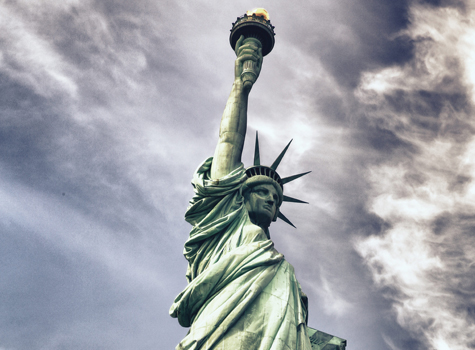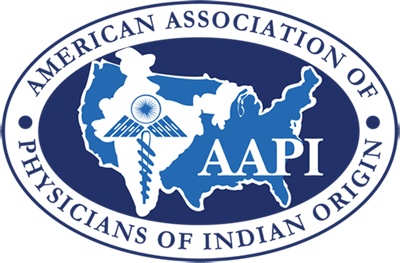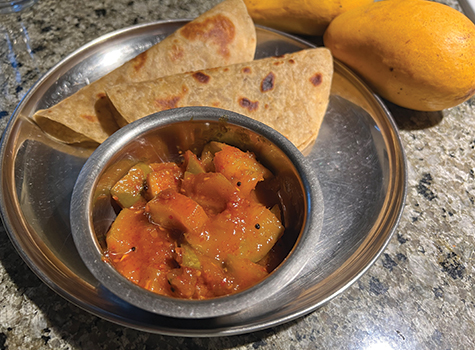
The story of America cannot be told completely without the stories of its immigrants. As the American historian Oscar Handlin famously said, “[o]nce I thought to write a history of the immigrants in America. Then I discovered that the immigrants were American history.”
The United States is undoubtedly a prosperous and powerful country. Many immigrants and their families count themselves incredibly fortunate to be living here. At the same time, we cannot ignore our country’s history of racial, ethnic, religious, and other prejudices which have not only harmed countless lives but have infected our social relations and civic institutions as well. As South Asian Americans, our skin color, values, food, and religious practices often differ from those of our neighbors and communities, and these differences have impacted our daily lived experiences for generations.
Beyond these more obvious challenges, however, there can also be a deeper sense of unease that many of us have long felt. This is a feeling tied to a basic desire that all human beings share: a desire for inclusion and belonging. It is innate for us as human beings to seek inclusion, to avoid a sense of being cast out or excluded from the communities around us. At a basic level, being part of a group affords a measure of personal safety and security; in the modern world, it means more. Feeling a true sense of belonging in our communities is critical to a good life, a life where we can step confidently into our academic, professional, and social lives knowing that we are welcomed among our classmates, colleagues, and neighbors as our authentic selves. For many of us, sometimes a sense of true inclusion and belonging in the American story often feels out of reach.
Each immigrant family has its own unique story of migration, assimilation, and identity. In large part, the contemporary story of South Asian America is widely understood to have begun in the late 1960’s to early 1970’s in the wake of the passage of the Immigration and Nationality Act of 1965, also known as the Hart-Cellar Act. This federal law ended decades of de facto discrimination against would-be immigrants from Asia, as well as peoples of Southern and Eastern Europe.
After its passage, the first major wave of immigrants from these areas, including Pakistan, India, Bangladesh, and other South Asian countries, allowed thousands of South Asian families to begin new lives in America. My own family was part of this wave of immigration. These South Asian Americans and their succeeding generations have made important contributions to the United States’ economy, culture, scientific achievements, higher education, and many other areas. Yet to many South Asians, it feels as though these contributions have often been recognized by the mainstream American culture as transactional in nature: as if South Asians’ presence in America is valued only on the condition of what we can offer to the country.
Part of the reason for the lack of a sense of belonging has been the failure of American historians and educators to recognize and include the South Asian American story in their telling of the history of America. As far as I remember, the immigration history sprinkled into my elementary and secondary education in North Carolina in the 1980’s and 1990s did not include any mention of South Asians. Even today, the Hart-Cellar Act and its impacts are rarely, if ever, taught in classrooms, despite the law’s monumental impacts on the demographics and culture of this country. Worse yet, going almost completely ignored is the longer history of South Asians in America dating back farther.
Take the story of Amir Haider Khan, an 18-year-old from Kashmir who had worked for four years as an indentured laborer on a British trade ship. On a cold night in 1918, Khan and a fellow laborer, with only the meager clothes they were wearing, escaped into the frigid New York City night. They were taken in by a Black boardinghouse keeper who gave them shelter and food, and a place to hide. Khan spent several years working around the U.S., before eventually returning to India to join its independence movement. Others with similar stories would go on to settle in the U.S.
Not only have South Asians been part of the American story for generations, but throughout that time we have also been central to the push and pull of American social progress and to efforts to broaden the definition of what it means to be American. Yet, because the story of South Asian America, in all its depth and variety, is mostly omitted from American history lessons, many of us have long felt uncertain as to our place in American society, past and present.
The good news is that things have begun to change. In recent years, in both academia and the broader culture, there has been a growing recognition of the important role that South Asians have played in the American story. Organizations like the South Asian American Digital Archive (SAADA) have taken on the mission of giving voice to South Asian Americans through documenting, preserving, and sharing stories that represent our unique and diverse experiences in America. Just one example of SAADA’s wide-ranging work is its repository of resources for educators, including lesson plans and activities that have been created to support high school and college-level educators in bringing South Asian American history and stories into their classrooms.
As a strong supporter of SAADA, I am heartened to know that current and future generations of South Asian Americans will benefit from its work. The inclusion of South Asian American history into the story of America is long overdue. Thankfully, each of us has an opportunity to help write a new American history by sharing our families’ stories and by supporting the work of organizations like SAADA that are working to document these stories so they can be retold again and again.
Neal Dongre is a North Carolina native with family roots in India. He sits on the board of SAADA. To learn more about SAADA visit www.saada.org, or contact Neal at nealdongre@gmail.com.



